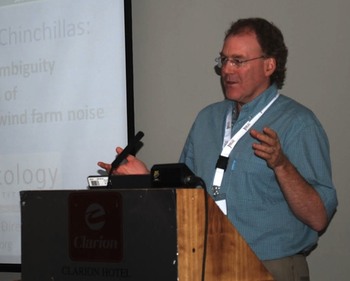AEI at Effects of Noise on Aquatic Life conference
Ocean, Science Comments Off on AEI at Effects of Noise on Aquatic Life conferenceI’ve been way lax in posting about my trip to Cork, Ireland for the 2nd International Effects of Noise on Aquatic Life conference, which took place in mid-August. It was such a treat to take part in this gathering of nearly 250 ocean scientists and regulators, leavened with a sprinkling of NGO folks. It was a rare chance for me to actually talk face to face with people who read and circulate AEI’s reports and web content; among the surprises was that German regulators read me as regularly as do their American counterparts, and that the Navy’s marine mammal environmental compliance program is a hotbed of longhairs, in contrast to the toe-the-cultural-line conformity many of us have adopted over the years—bravo!
For now, I wanted to at least get my presentation up here and available to those interested. The main theme is that there appears to be a spectrum of individual noise sensitivity, with about 20% being very sensitive to any new noise, 50% largely tolerant of most noise, and 30% in between, responding as the noise gets louder or more intrusive. My initial idea was to share some of this research on humans, and to hear from humans living near windfarms, as a typically “out of the box” AEI approach to exploring questions about why we see such a wide range of responses from marine mammals to ocean noise. But as I prepared the presentation, it began to appear to that there are some fairly compelling indications that this spectrum of noise sensitivity may in fact be a cross-species phenomenon, with many studies of animal disruptions seeming to peak at about half the population being affected. Time will tell whether this is true, and if so, what the implications are. I’m going to continue to explore this theme at a National Wind Coordinating Committee meeting on wind farms and wildlife in October.
Here I am giving the Cork presentation:

You can view the Powerpoint here, or click on the link and see it on the Slide Share site, where you can view it larger, or download it.
